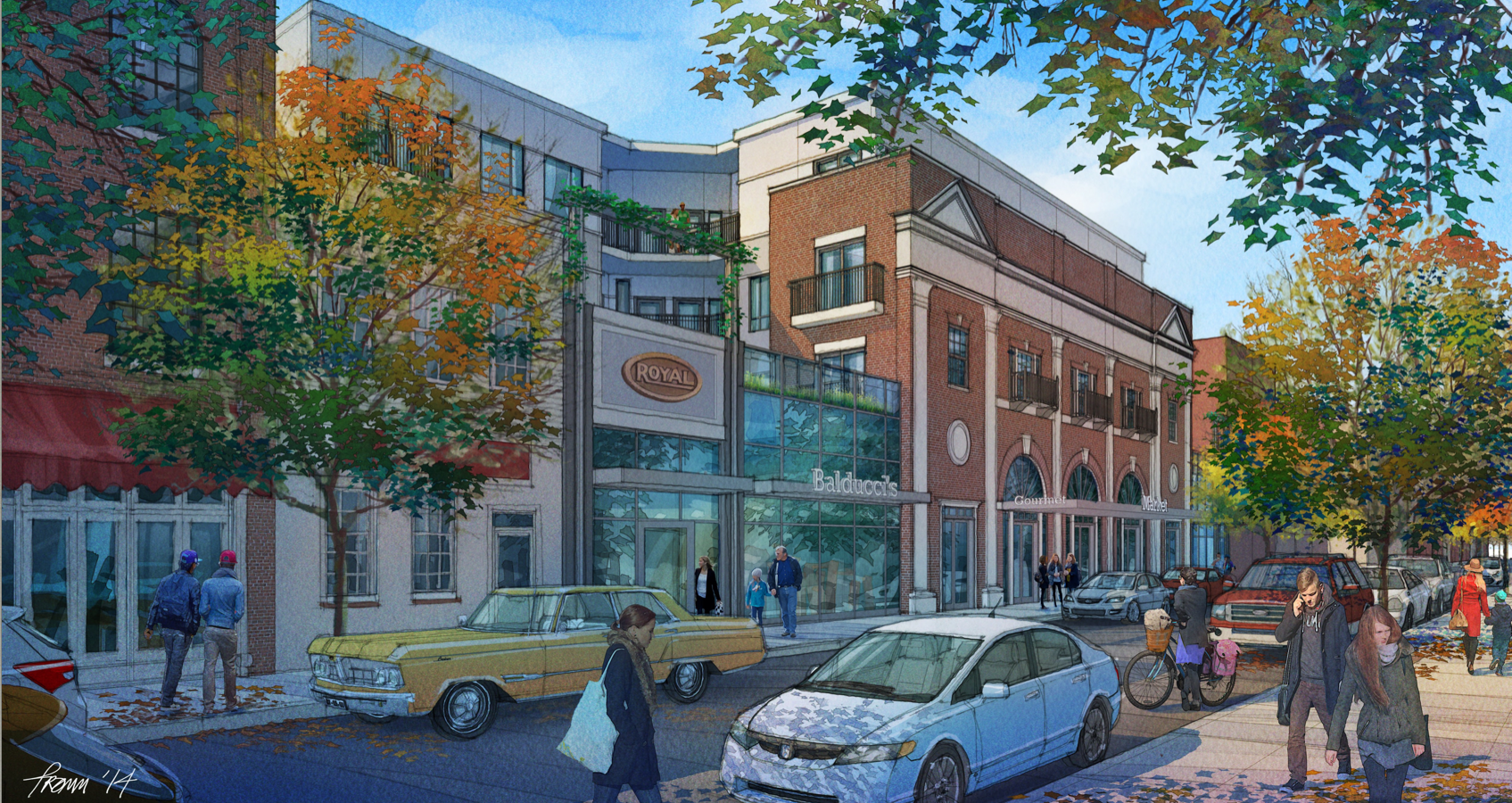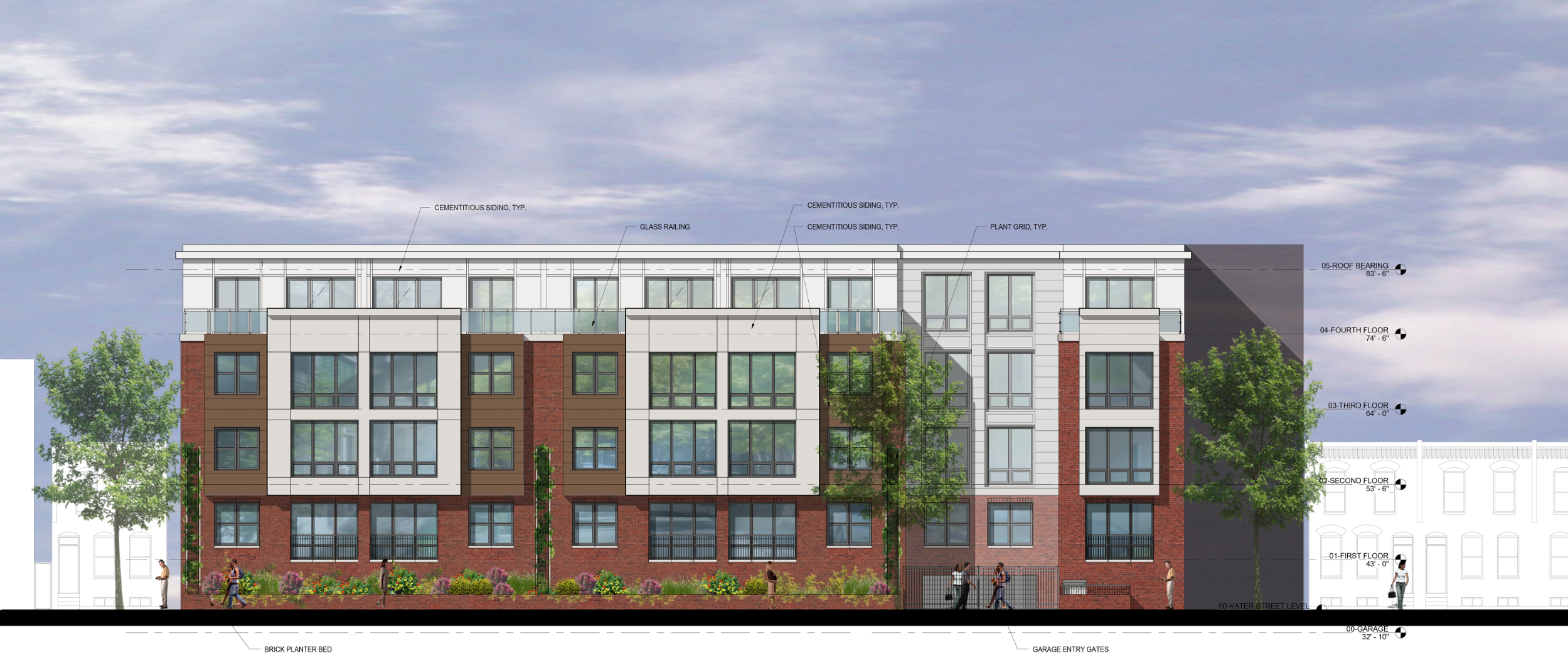Royal redevelopment clears design hurdle

After 40 years of neglect and several false starts a path is being blazed to demolish South Street’s Royal Theater and replace it with a new mixed-use building that incorporates the old theater’s façade into the new structure. This development, advanced by Dranoff Properties and the property owner Universal Companies, requires layers of preservation approvals.
The Royal, a cultural landmark of black Philadelphia that opened in 1920, is listed in the Philadelphia Register of Historic Places. That means any plans for demolition require that the Philadelphia Historical Commission grant a preservation hardship, agreeing that the building “cannot be used for any purpose for which it is or may be reasonably adapted.” (A hardship committee hearing is scheduled for Tuesday, June 30.) The Philadelphia Historical Commission also must approve the designs for what will replace The Royal Theater.
The latter consideration started on Tuesday with less than a half hour of conversation at the Historical Commission’s Architectural Committee, which offers nonbinding advice to the commission.
Current plans call for full restoration of the theater’s restrained classical revival façade elements, from terra cotta restoration to the recreation of metal doors and windows – with all details considered at staff level. Committee review and public comment was primarily focused on the new design.
The new building will be a larger footprint than the old theater, extending onto a lot to the east. The designs, by J Davis Architects, envision the new building set back from the original façade by brick returns and visually offset through the use of primarily glass facades for two stories of retail space and the residential lobby. The large ground-floor retail space clocks in at nearly 7,000 square feet – plans note it as a Balducci’s, which is a regional gourmet market chain.
Areas of the new building which flank the original façade along South Street will be two stories tall, primarily in glass and topped with green roofs. Above and behind the new retail space will be 45 residential units. The residential areas of the new construction will be clad in brick and cementitious panels facing both South and Kater streets. Underground parking for 20 cars will be accessed through a single gated driveway on Kater Street.
The committee had questions about materials and a few comments on the design itself. Some members questioned the presence of large metal awnings installed on the South Street Façade, including the original fragment of the theater. Committee chair Dominique Hawkins said she thought the setback for the fourth floor, which rises above the original façade’s parapet wall, does not provide “enough relief” for the historic façade to feel truly set apart.
Jim Campbell and Marcus Ferreira of the South Street West Business Association and Lauren Vidas of the South of South Neighbors Association both expressed their respective groups’ support for the new development. It is, Campbell said, the best presented for the site in 30 years.
On a block that has changed radically in the last few years, The Royal has long been seen as a missing piece and some neighbors see the current plan as a good compromise that makes a nod to the site’s history and provides a new mixed-use anchor for South Street West’s commercial corridor.
The committee voted to recommend the designs to the full commission contingent on the commission’s approval of the pending hardship application. (What’s hardship? Read our primer.)
In addition to the Historical Commission’s jurisdiction over this development there are two more layers of preservation review that must be satisfied for the demolition and new construction.
Firstly, the Preservation Alliance for Greater Philadelphia holds a façade easement on the property, which means they must also approve of any alteration to the façade. Patrick Grossi, the alliance’s advocacy director, said the current plans to restore the façade are not in violation of the easement.
Then there is also a deed restriction held by the Pennsylvania Historical and Museum Commission (PHMC) that triggers state-level preservation review. That restriction accompanied a $50,000 Keystone Historic Preservation Grant awarded to Universal in 2008 (though it was awarded in 2006) and is in effect through 2023.
The covenant’s stated purpose was to help Universal “ensure the maintenance and preservation of the architectural and historical characteristics of The Royal Theater.” It also specifically states that “no construction, alteration, rehabilitation, remodeling, demolition, site development, ground disturbance, or other action shall be undertaken or permitted to said property without prior written permission from the Commission.”
WHYY is your source for fact-based, in-depth journalism and information. As a nonprofit organization, we rely on financial support from readers like you. Please give today.






